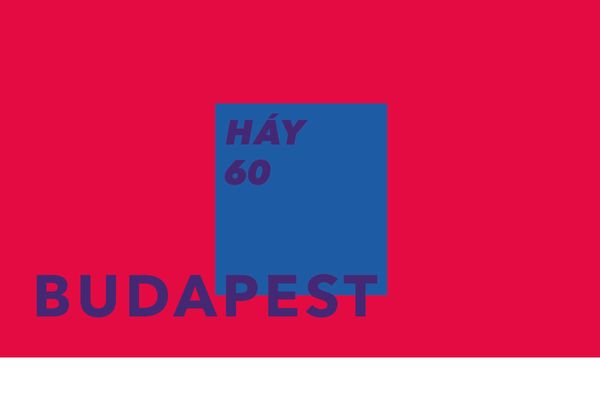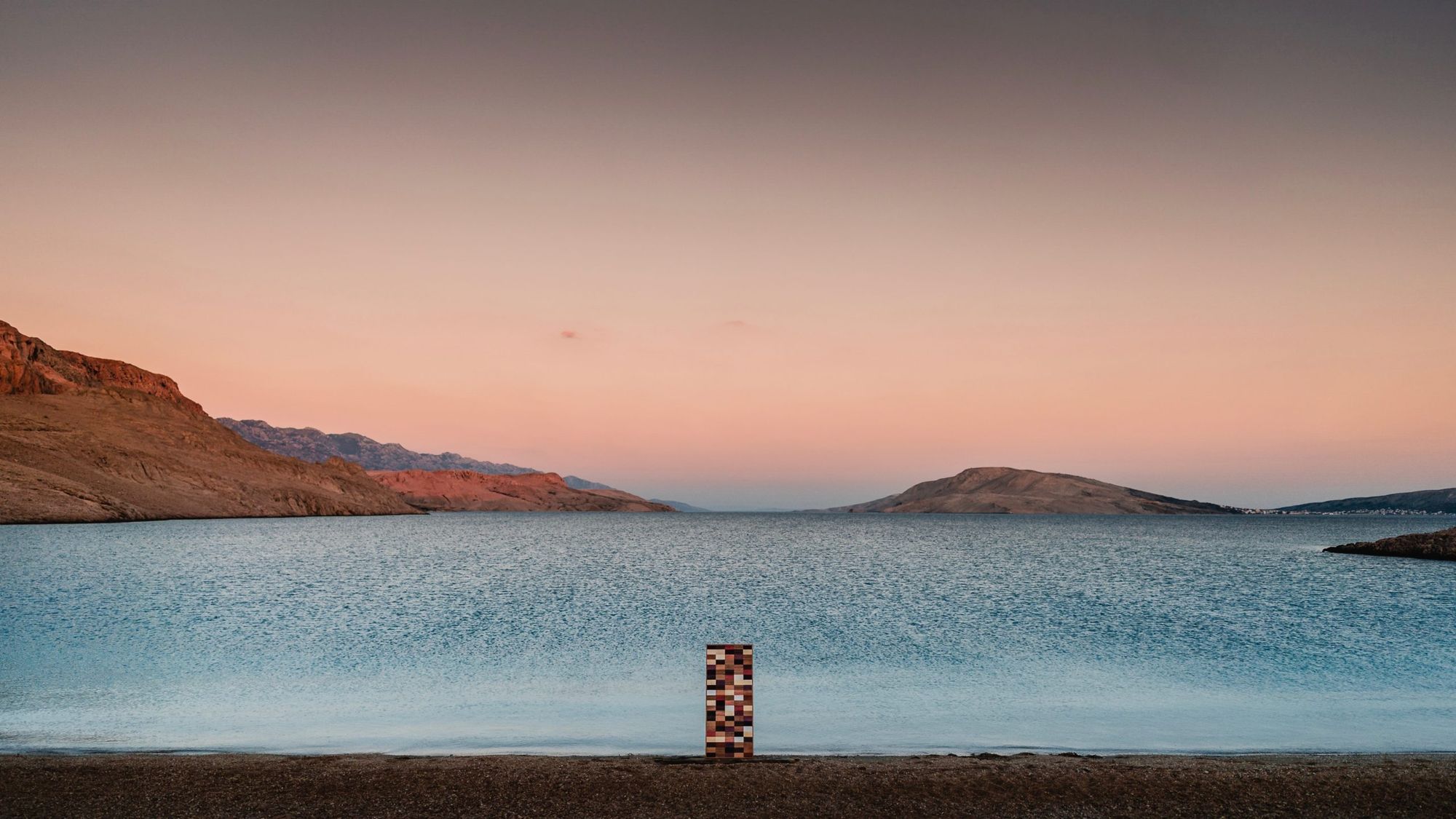Anna Lébényi can be familiar from the eco-conscious Printa brand for many, where she first worked as a production manager and designer, and later as a brand manager. The designer, who originally graduated as an architect, also tried herself in woodworking, and learnt the know-how of marquetry, too. Now she has launched her own brand, with some very special partners. Interview!
Anna, help us a bit: what does the brand name mean and how is it pronounced correctly?
At the end of 2012, I arrived to a crossroad: I could go on the designated path and work as an architect or make an uncertain decision and finally do what I am truly interested in. By then, I have already attended several camps on permaculture and sustainability – these “washed my brain” in the best possible sense. As a result of family constructions in my teenager years I found out that I loved working with wood, the plasticity of the material surprised me, and I was amazed by the proximity of nature. So I gave myself a chance: I spent half a year in joineries where I studied together with the vocational school students: our final project was a marquetry chess table. This was when I fell in love with the technique.
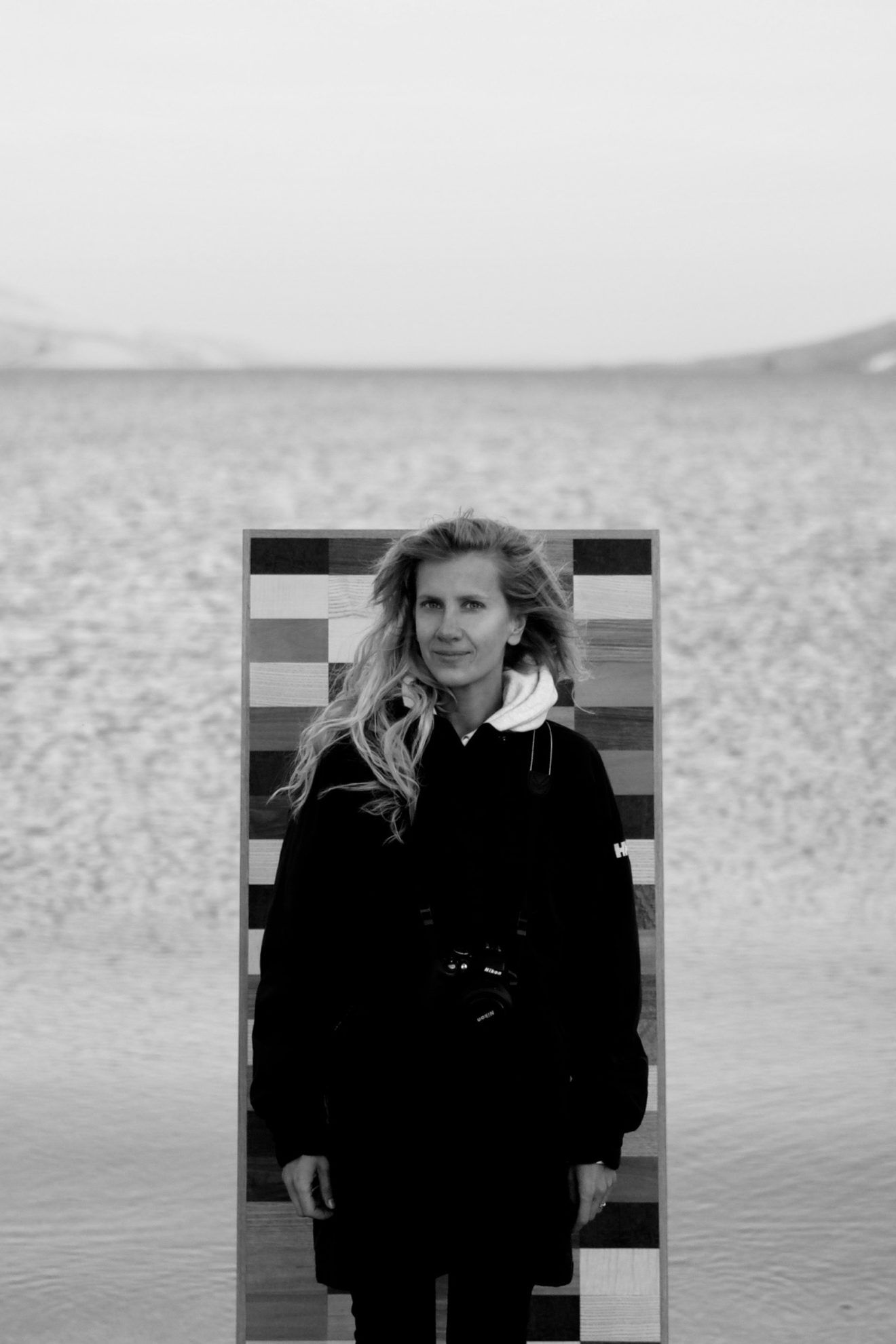
VUUV Works /pronounced as vúv vörksz in Hungarian/ is a result of playing with my first name: “VUUV” comes from mirroring “ANNA,” I added the word “Works” and the two virtually mean that “Anna works.” I liked that it sounds a bit like the plural of “woodwork.” At this point, I was working alone, but I decided to keep the name. Around this time, I started to develop a brand based on recycling leftover products of the furniture industry, but then I faced some financial challenges and I knew I had to gather a lot more experience: so I submitted my application to Defo Labor, IVANKA and Printa, and finally I was hired by the last.
VUUV Works is not a one-man-show, I’d rather call it team work, or maybe even a community. Your personal story, mission and passion can be felt in it absolutely, but you managed to find the perfect partners, too. Would you introduce the other members of the team to us?
Happy to! I know Ádám János Nagy and Jenő Köpf from the joineries. Jenő is one of the owners of Aiksz Zrt., a woodworks professional and an extremely gifted woodturner. Jenő has many friends who alert him immediately if a sick tree is cut near Székesfehérvár, this is where the wooden material comes from. And Ádám was a promising student when we met: he was preparing for his first professional competition at the time, and then he won European Skills in 2018 and established his own workshop. Both of them are very open and are committed teachers of their crafts.
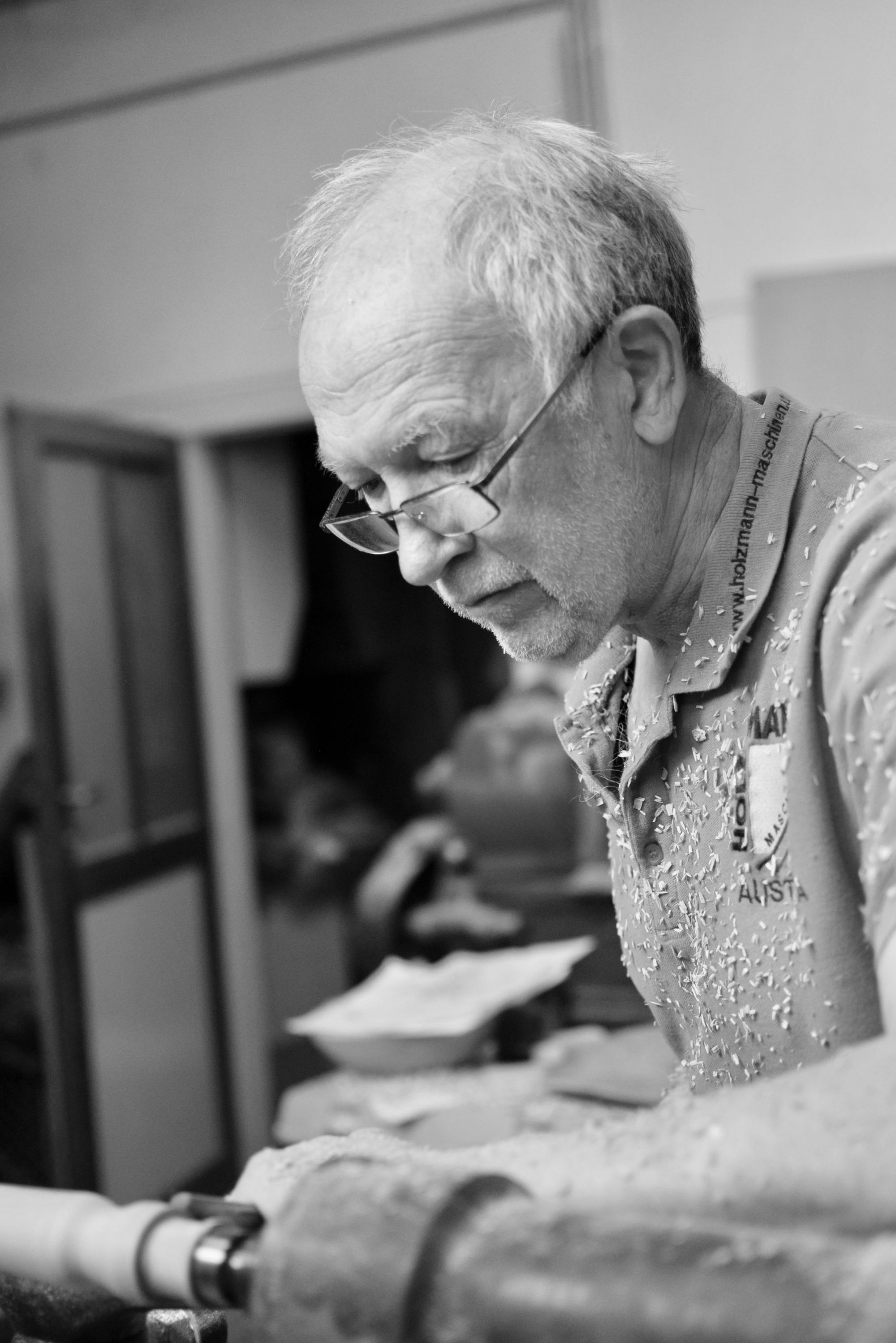
I have been following Sára Hajgató since the foundation of Botanika on the world wide web, she has gorgeous pieces made with plant-based painting. She is quite well-known owing to her brand and workshops, she is a significant figure of sustainable fashion in Hungary. We started talking in the beginning of 2019, and she was a great help in clearing my thoughts. A great person, who always asks the right questions.
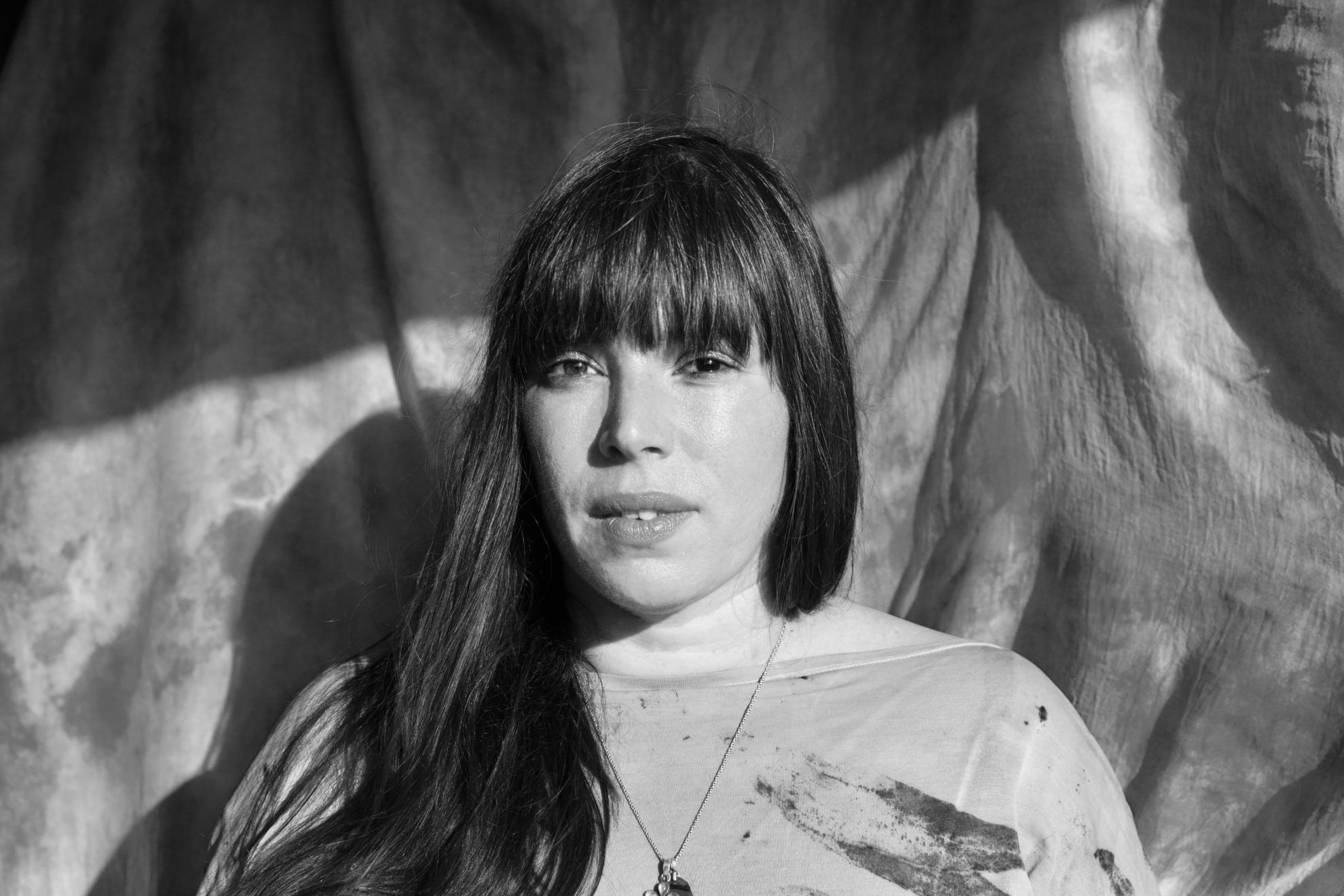
Eszter Szilágyi walked in my life out of nowhere: the woven fabric she was wearing (made by herself) caught my eyes right away, and her light and calm personality also had a great influence on me. I thought I wanted to work with herself once, and so when the time came, I looked up her number. Amongst many others, she graduated from the Folk Vocational School of Nádudvar as a textile weaving folk craftsman.
In 2014, I wanted to create plant-based wicker bags under the aegis of VUUV Works, with Noémi Sziládi (the designer of the Müskinn brand – the Ed.). We created a few designs, experimented with sewing some veneers, but I hit a dead end at this time with the use of husk as a material. A little bit later I contacted Tünde Kiss, who is a folk craftsman specialized in cattail weaving, a specialist of more filigree fashion pieces, and creates accessories under the name Tünde Design.
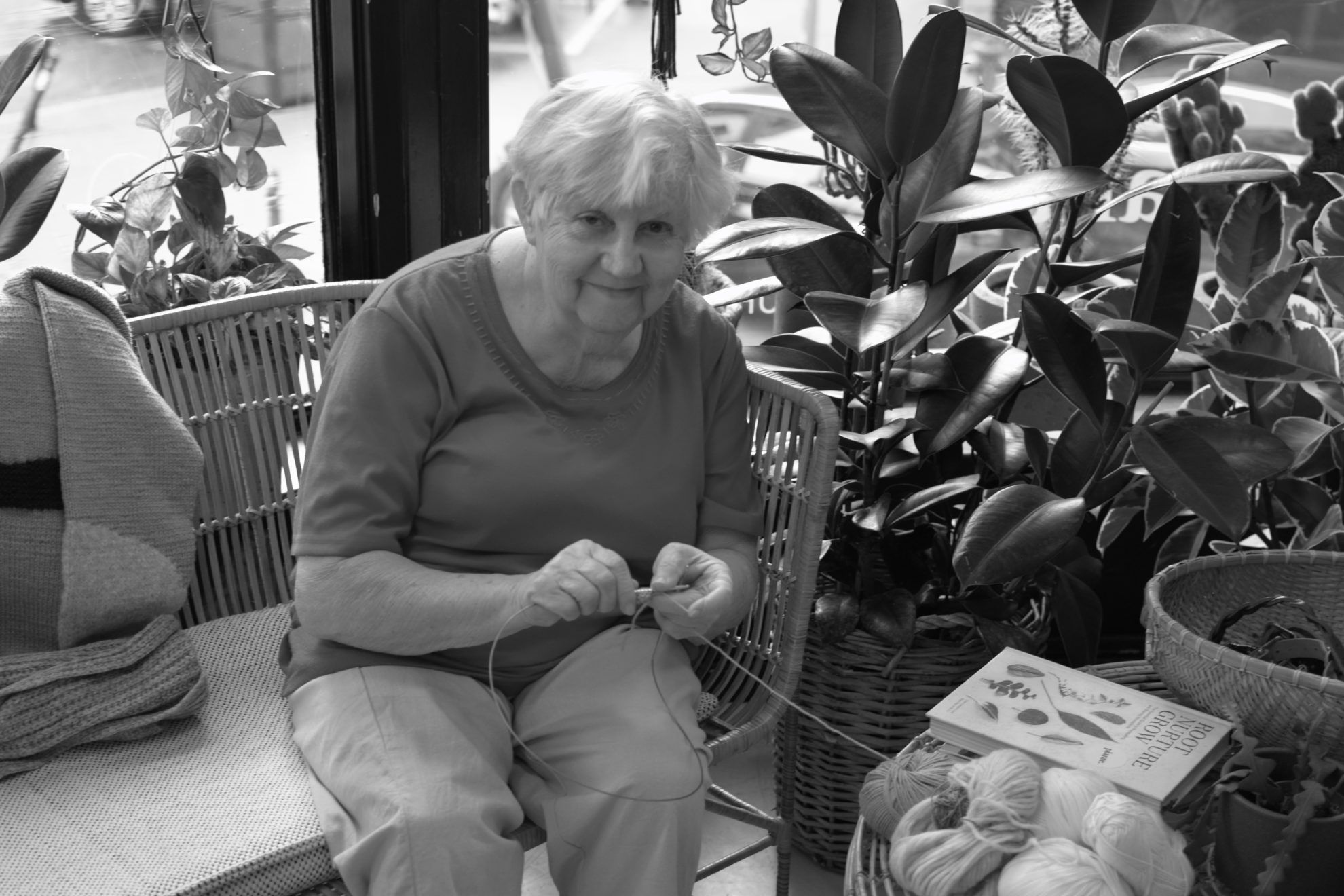
Tünde recommended Tibor Kovács, who is quite renowned amongst basketmakers: he is a person who is incredibly productive professionally, and creates larger pieces out of cattail, requiring the strength of a man. Both of them work and teach their crafts with extensive expertise. I respect them for not only creating and selling what they make, but for also harvesting the raw materials, which makes their work truly traditional and sustainable.
I contacted Zoltán Hári when I had my plans ready and I had every material for the jewelry. I needed a goldsmith who can do everything and thinks creatively. He and his wife form a quite strong duo, both professionally and technologically, they can do everything (me and my husband, for example, owe our wedding rings to them).

Egonné Dr. Horváth, known as Zsuzsa néni or “the knitting lady” by many was recommended by a friend of mine. Zsuzsa knits anything you need, she has a unique routine: she has worked and still works with the biggest fashion brands in Hungary. No materials have been published yet about her works, which tells a lot about the fashion industry’s attitude.
There are two things that cause the greatest trouble in the life of every Hungarian design brand: finding the right raw materials as well as reliable craftsmen and subcontractors. How did you manage to do this?
Designing sustainably and looking for and procuring perfect materials has been a daily routine for me for 7 years now. I am quite comfortable in this, and I am happy to share the information I gathered with others, too. Sustainable use of materials is a basic criterion regarding which I hold my ground. At VUUV Works, materials must be local-natural – if this cannot be found at home, then we must procure a version manufactured by a European company that has a sustainability certificate and which is flawless from the point of sustainability. We are not only designers: we also create everything in addition to design, we procure the raw materials, and so we verify the sources.
What gave us a hard time was making shipping sustainable. This is how the idea of carbon emission compensated with planting trees was conceived, which is now fully provided by the independent organization GreenDependent to us. In addition, our packagings are also composed of 100% biodegradable and compostable materials.
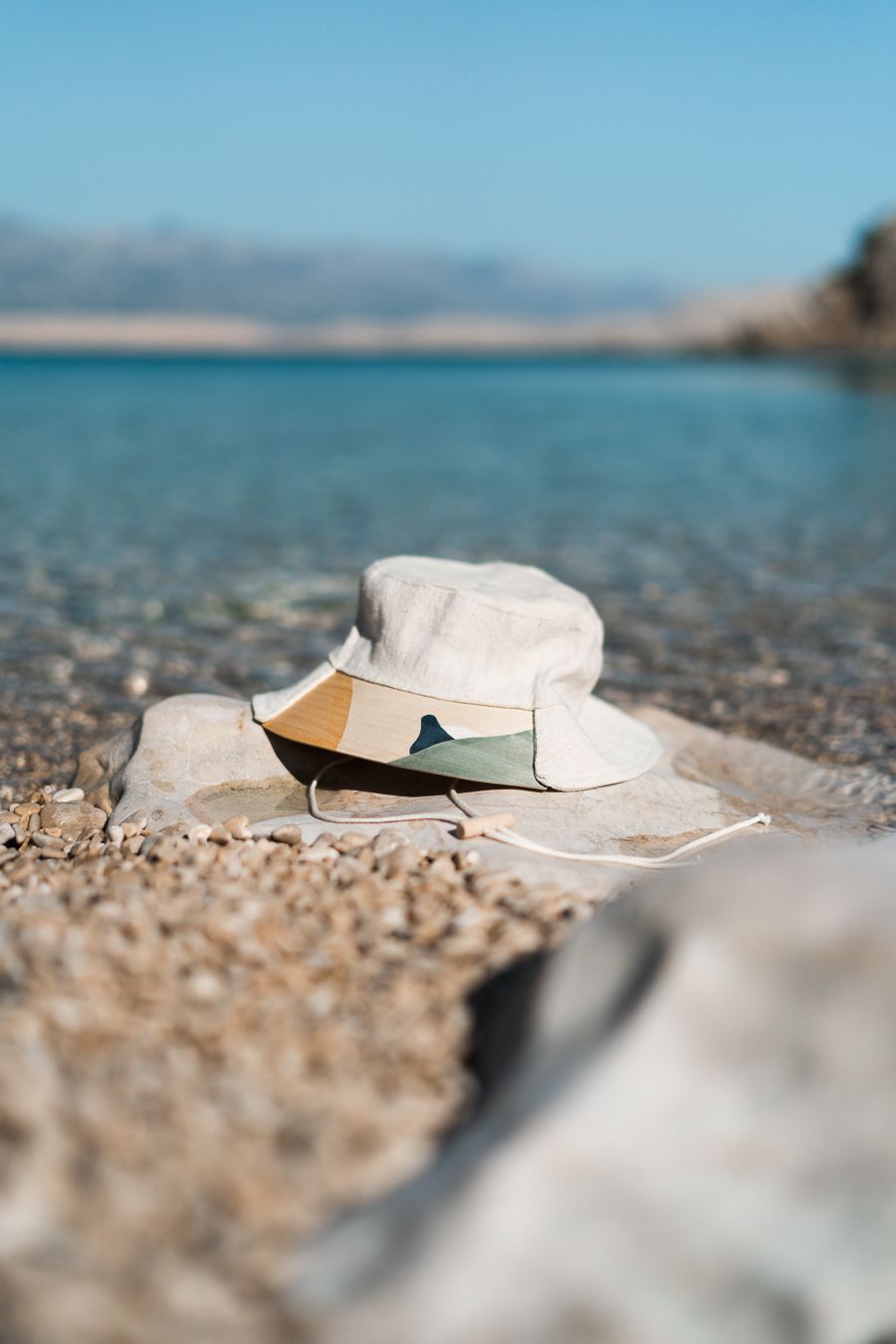
When I encountered VUUV Works for the first time, I thought it was a completely new brand. Which is only partially true, as although your official website was launched only recently, the story of the brand started approximately seven years ago if I’m correct. Could you tell us a bit about what happened in the past seven years?
I put VUUV on hold, as a hobby, for six years, as my job at Printa, where I also brought the sustainable-artisan approach, required all my efforts: my tasks of production management and design were also complemented by brand management after a while. I had orders, my marqetry pieces were sold in several stores, and I went to Jenő’s workshop in my free time to inhale some of the smell of the joinery. I started and then stopped works halfway – I was troubled by this, but I simply couldn’t invest more energy into it at the time. During this time, however, what I wanted became crystal clear. I was introduced to Jolán Törőcsik, marquetry artist. She was a fantastic person, she taught me the use of wood with love and respect, preserving and using its natural patterns. Her approach was unique.
I finally had the energy for VUUV again in 2019. The first prototypes were captured by nature photographer Gábor Nagy, who is one of my closest friends since the age of 16. I owe him a lot, his optimism has a good impact on me and his enviable way of managing his freelance jobs always inspires me.
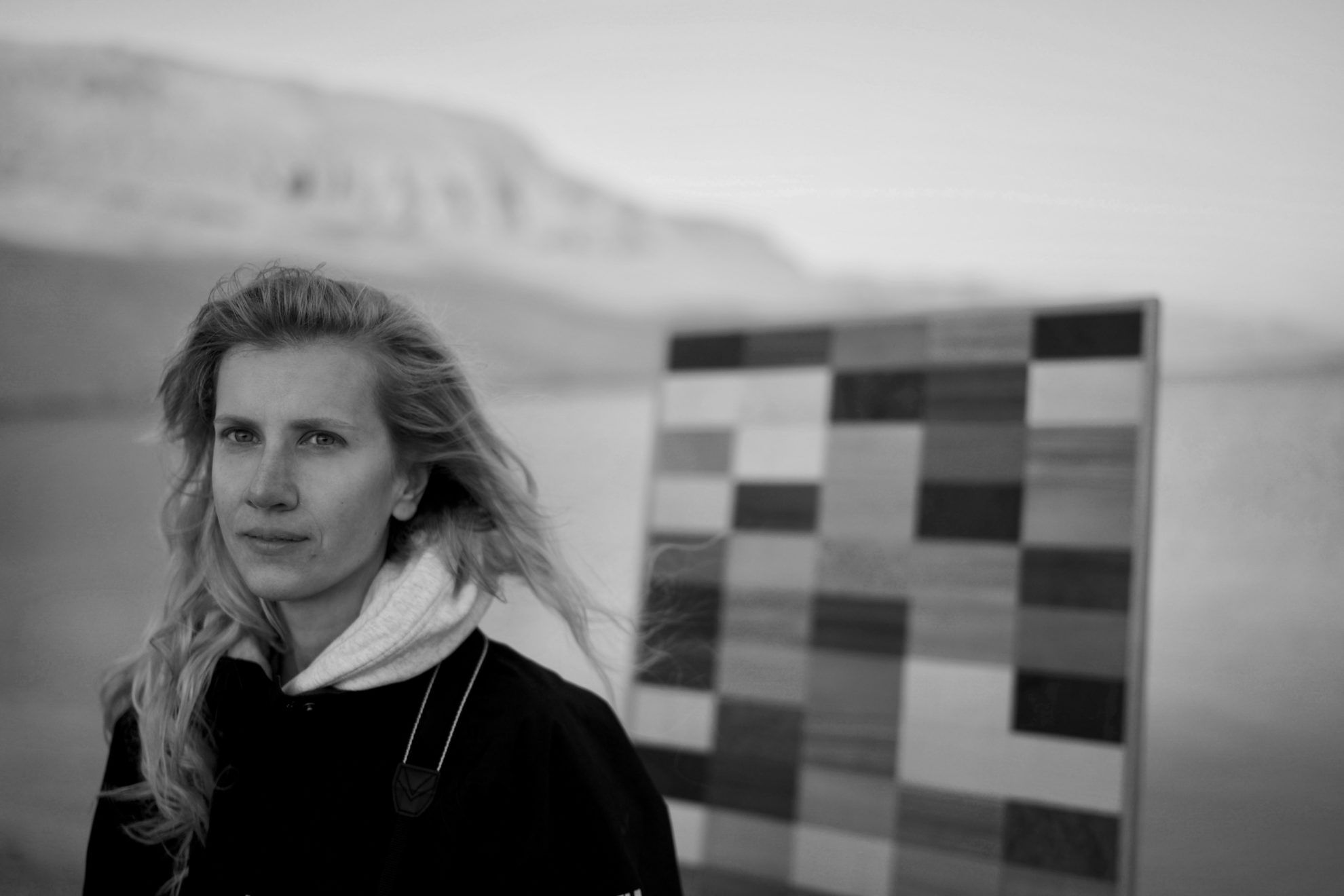
We lived in Egypt when I was a kid, my Dad photographed and did scuba diving back then, so we went to the sea a lot with my family. We went trough the desert of the Sinai Peninsula, many times night fell upon us by the time we got to the accommodation, and we listened to music all along. The sky was like in no other place, we could see the Milky Way, and we could feel how tiny parts we were of the universe. This scene and space inspired the visual world of VUUV, and, therefore, it inspired our location scout, too. We shoot for four days with Gábor on Pag, in a very good workflow, which was preceded and followed by lengthy preparations and post-editing. We wanted this longing for space and freedom to be echoed on the images, and I feel we managed to achieve this.
I started building the website last fall, with the value that is the most important to me, the stories of the masters. Graphic designer Dóra Ladjánszki reimagined the old logo, and designed a branding with minimum use of materials. From then on, creating further product photos, writing copies, managing the different processes and the joint creation of the basic stock filled my days for some months.
Tell us a bit about work processes. If I guess it right, the VUUV Works products are not manufactured in a single workshop, but the different partial processes take place in different parts of the country, in the shops of the masters. How do you assemble the products?
Yes, absolutely. The online store consists of two parts: FURNISH and WEAR. WEAR includes everything that can be worn, and FURNISH contains furnishings – these must be in the same city physically from the point of manufacturing, in our case this is Székesfehérvár. Once I have cut and assembled the marquetry manually in the workshop, Feri Gál presses it with a press with a surface of 3 x 1.3 meters. Feri didn’t want to be included on the website, but I don’t want to leave him out, as he is a very talented professional, a true guru of pressing. Ádám and Jenő also work in Székesfehérvár, everyone carries out their own work phase in their own workshop – Tibor will also join soon with cattail. I meet him and the creators of the WEAR products in Budapest, this is where handovers take place once every week. I do the majority of material procurement, so either I give them materials or they give me the unfinished product, which I then finish.
We create the FURNISH products with maximum 5-8 weeks deadline. It’s important that we don’t feel rushed by time, because as an artisan product, I work on a marquetry for a long time, and the others take their time, too. In the case of WEAR, we sell from our existing stock. We don’t want a wide product palette, but we’ll expand our current selection a little bit, we are currently working on that.

Responsible, transparent, conscious, personal – these expressions popped up in my mind about your brand. It’s responsible because it doesn’t want to satisfy consumer needs, but change them, to direct the consumer towards the right path. It’s transparent, because we can know about every product what material it was made of, who designed it, who made it, and who procured the materials for it. It’s conscious because it cares about the environment. And it’s also personal, because I get to learn the story of the people who invested their time, attention and expertise into the product I purchased. How do these concepts appear in the life of the brand, on an everyday level?
This is a very good summary. To compensate the carbon emissions of shipping, we plant indigenous fruit trees into the gardens of schools, kindergartens and non-profit organizations, which is not an option for the customer, but a given fact. I hope it will become a trend, but I would be happy if railway post returned with low emission cars, it doesn’t matter if its slower. Our packaging is blister made of biodegradable plant-based starch, paper, recycled paper and wood chips, from Jenő’s shop. It’s part of our awareness-raising and educational activity that we manufacture the furniture with longer deadlines. This also indicates that it’s not mass production, and not about immediate satisfaction of consumer needs.
We are very strict when it comes to the selection of raw materials. In the case of sweaters, for example, this means that we use thread and merino wool and alpaca yarn with GOTS certificate that are manufactured in Hungary. Sára dyes these with plants that are growing in Hungary, and Zsuzsa knits them.
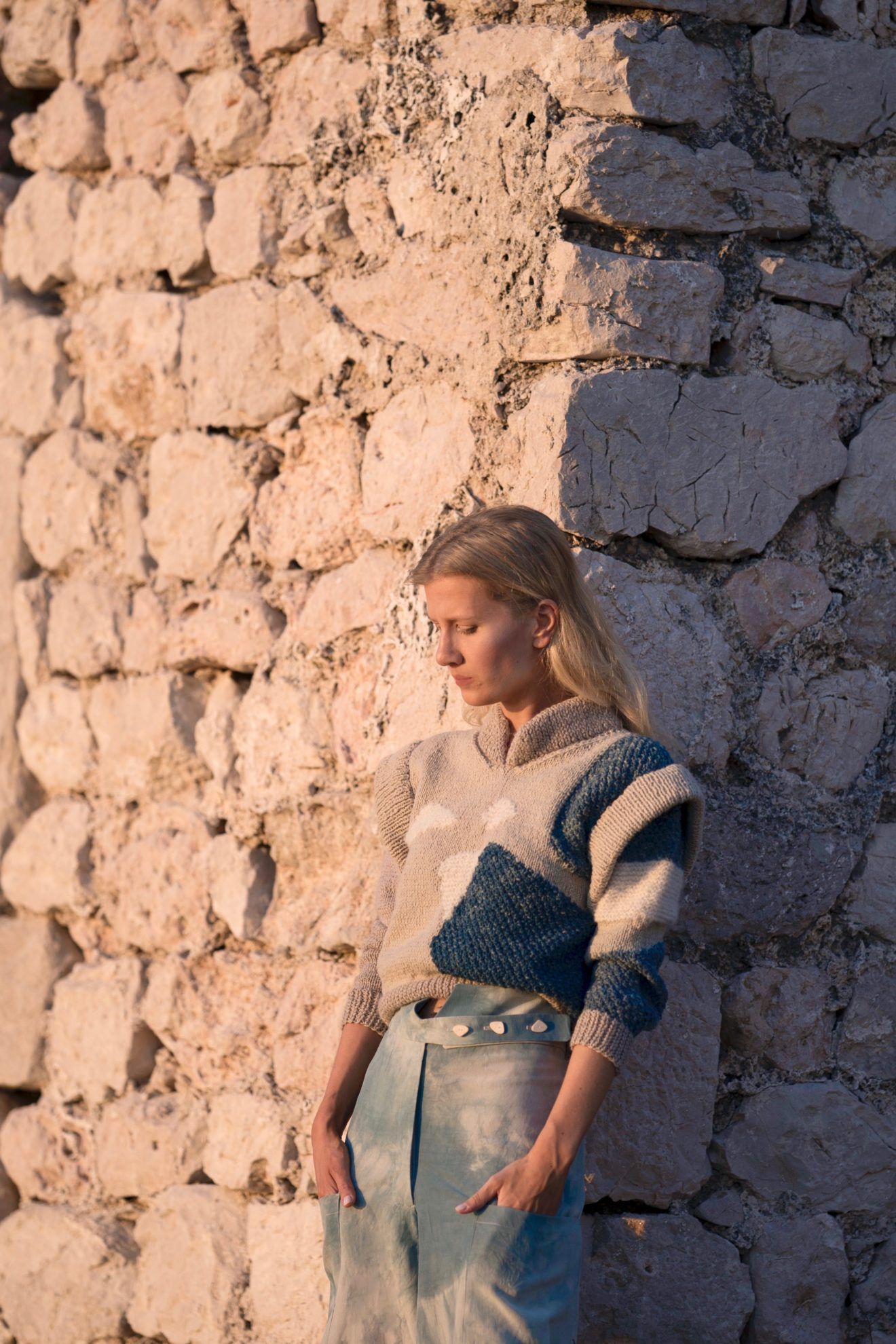
We don’t want to have a store, we would rather have a workshop, where the prototypes could be seen and where customers could meet the creators at events and programs. This remains to be seen, and until then, we’ll keep on posting visual materials about the creators and their works.
There is a nice saying, it goes something like this: “Where we are alike, we are strong, and where we are different, we are rich.” Where we are alike is the commitment towards our crafts, the love for natural materials, and where we differ, we are rich spiritually, intellectually and professionally. We should let everyone be who they are, and we should respect this. There are people among us who can design, and are good at it. There ones who are not that fond of designing, despite the fact that they could do it, but they are creators instead: they put every inch of their crafts’ creative knowledge into the work. The idea, design, procurement of raw materials and creation are equally important, as each and every one is needed for the final output. We present who puts what into a piece with this in mind.
VUUV Works offers marquetry furniture, clothing items, accessories and jewelry. Could you introduce some pieces you prefer the most or that have a memorable story?
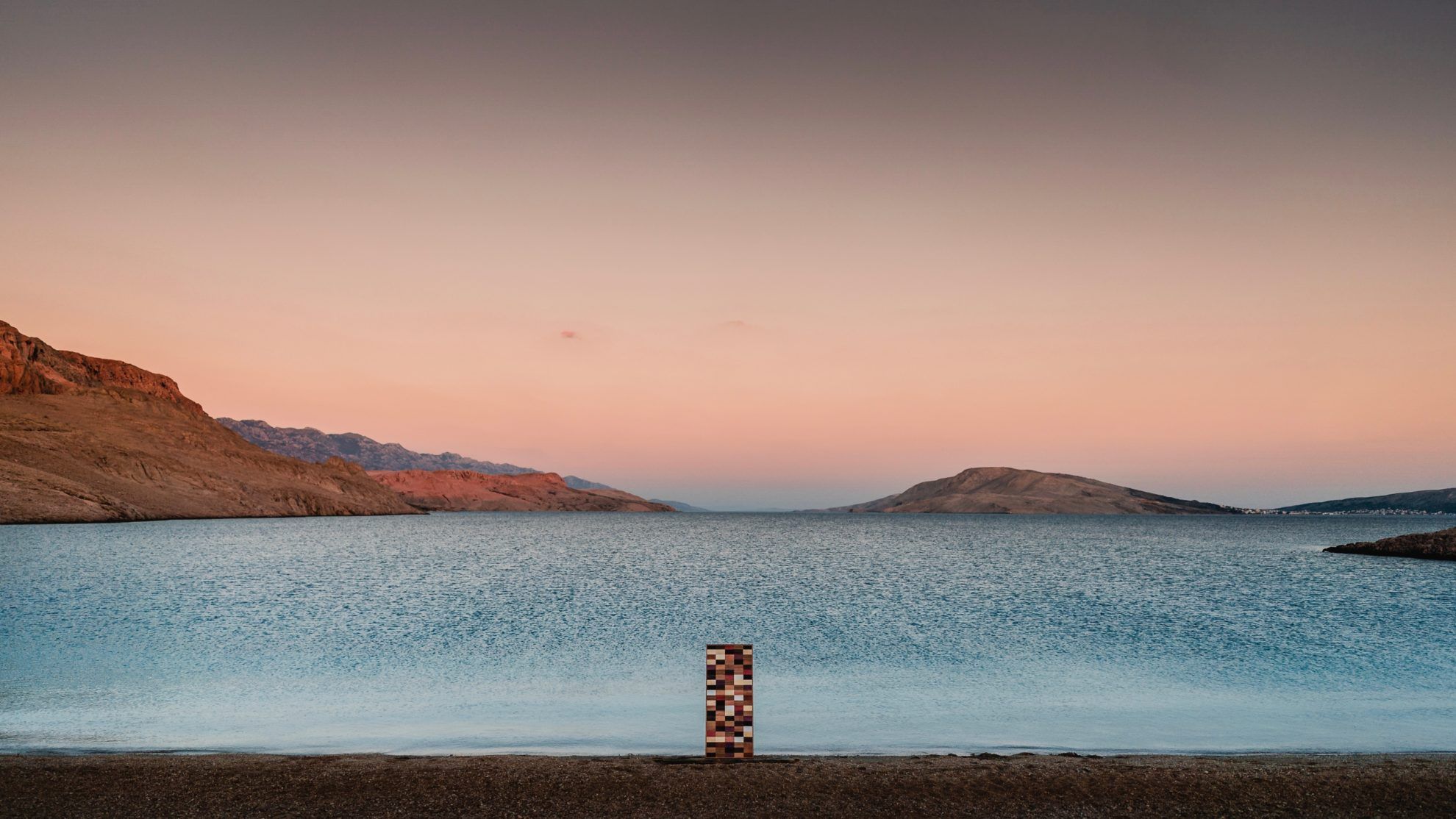
The picture was made on the first day of shooting, it has everything we wanted with Gábor. Finally this series determined the current atmosphere of the site, too. Choosing the location was easy, I sought the area on the satellite photos that is relatively close to Hungary and is sand-colored, that is, it looks like the desert. After we travelled all night, we took the marquetry sheets weighing 25-30 kg each, and walked a solid 300 meters from the car to the desired part of the beach. Here, to our greatest surprise, a 1.5 meter high metal column rose from the ground, with a plank laid down beneath it. It was as if it was waiting for us to place the sheets on the plank and to lean it against the column, so that it didn’t even need me to support it. Gábor said that others must have also brought their heavy-ass marquetry sheets here to photograph them (smiles).
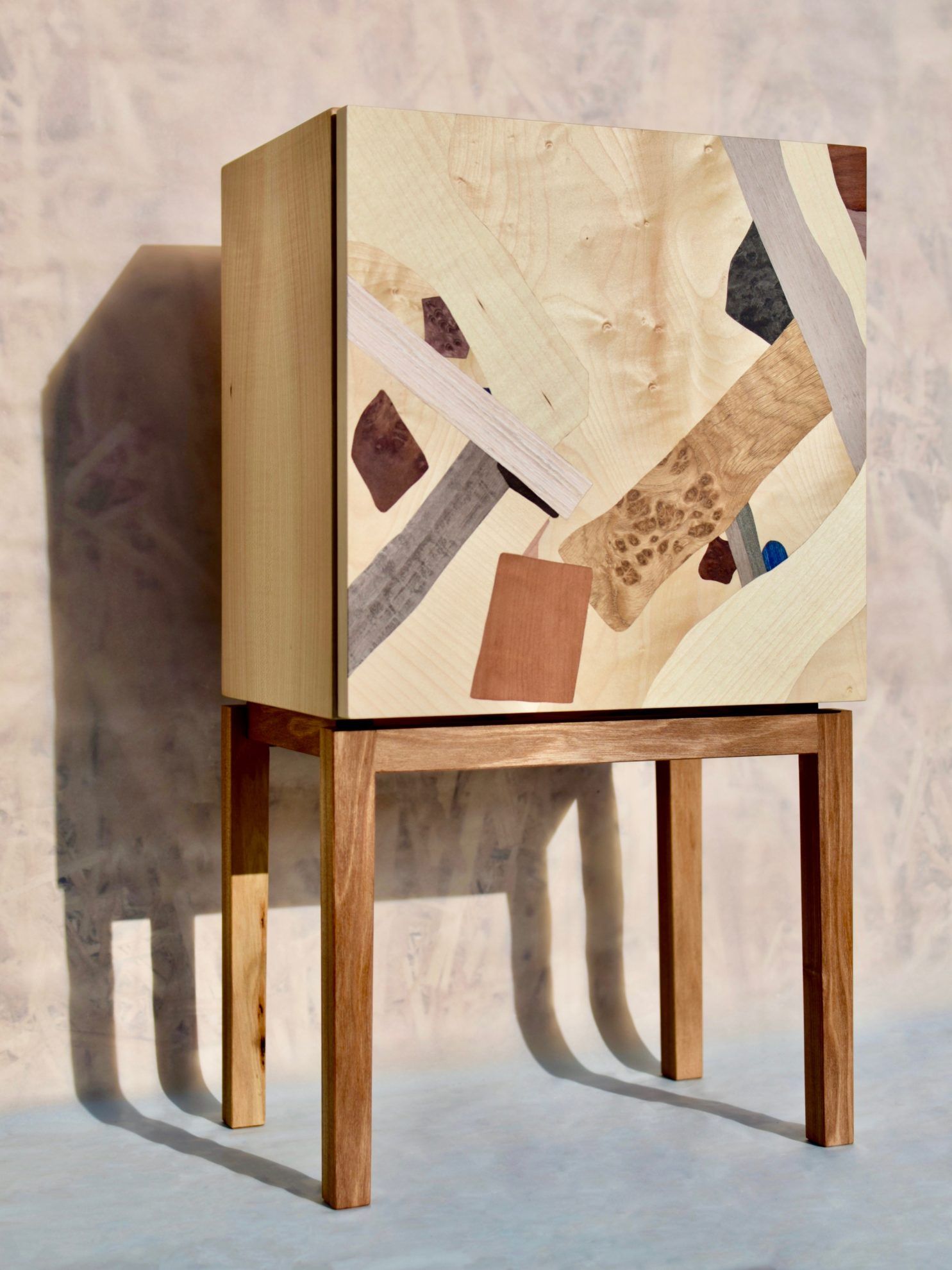

These solid wood night stands are the first works of me and Ádám. The peculiarity of the rectangular one is that it can also be ordered without legs, and can be hanged on the wall. We make it out of maple, walnut and cherry wood, with different patterns and sizes.
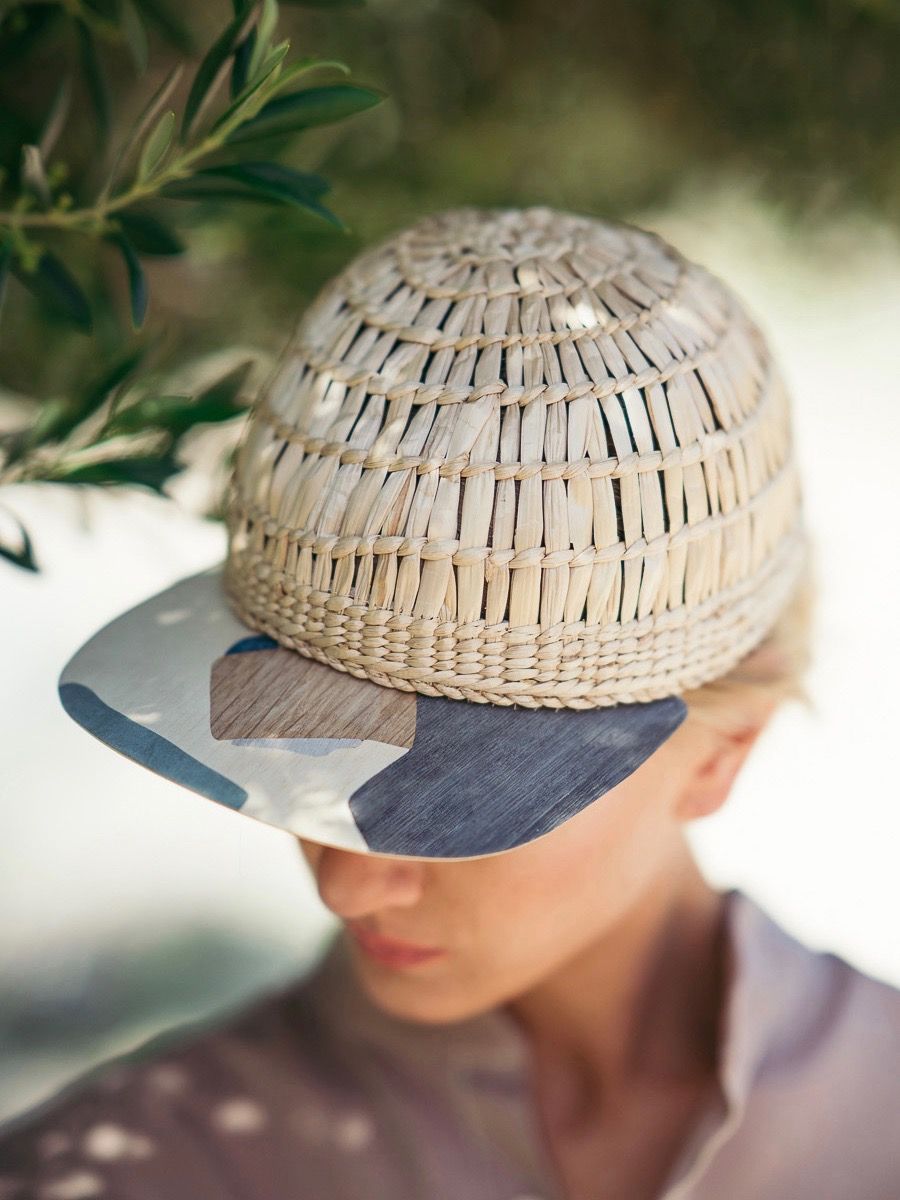
I designed the first cattail cap with veneer shield in the summer of 2017. Since then, we have changed it a lot, so it is available on the site in several versions. Tünde creates the skull part of the cap with fine sizing in a more rectangular as well as in a close-fitting version, and I create the shield part from oak or inlaid maple wood.


The „Lél” and „Em” earrings are made of recycled silver, quartz crystals from the Mátra and turned wood. Jenő Köpf worked the blacknut, Zoltán Hári worked on it as a jeweler, and I worked on it as a designer and I purchased the materials.
At the sight of the gorgeous inlaid night stands and stools, I thought “this is a slow genre.” We could even call it slow design. How open are people to this in your opinion?
Yes, good work needs time, especially the technologies that have evolved over hundreds of years. It can be seen on a well-crafted piece that it has a lot of energy, devotion and expertise, even by the untrained eye, even if they cannot put it into words. People’s spirits are very open to slowing down, they need connection and trust, which they cannot get from the mass produced products with uncertain origins. I always felt that those creating with their bare hands are in a special balance with nature, themselves and work. Today’s accelerated world lacks harmony, which is a little bit brought back by the pieces made in this fashion.
If we merge design with the masterful knowledge of local traditional craftsmen, then we get the most rational and most environmentally friendly method of creating products. As a brand entering the market in 2020, we must act responsibly. Not only on the level of sustainable use of materials and eco-conscious processes, but also on the level of social responsibility. We must pay attention to the preservation of humane and cultural values. For me, creation makes sense if we can fulfil these commitments, and if we continuously strive for better solutions.
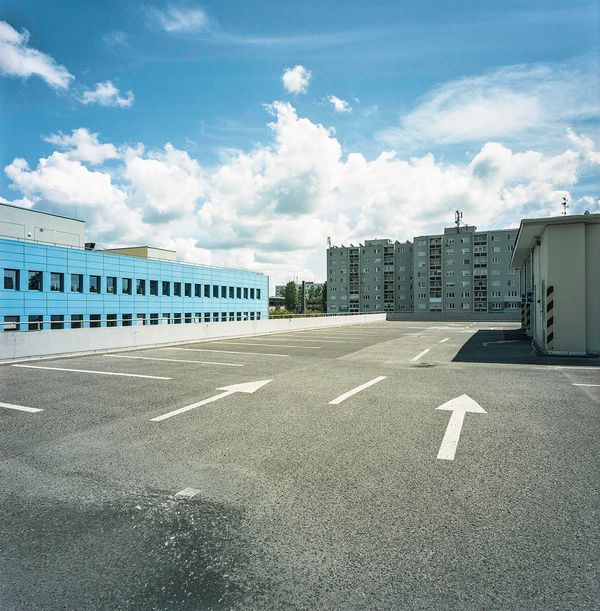
Negative space

Archition | architectural visuals with a twist
